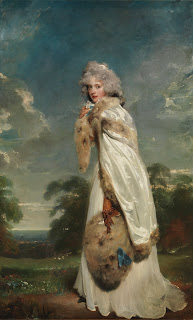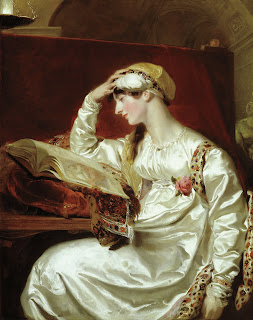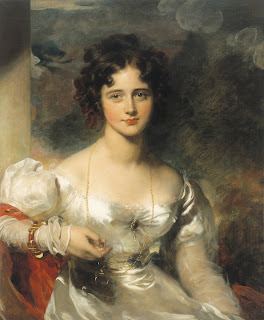Today’s post is a bit, well, risque, so if you’re offended by art depicting nude women, I suggest you click away now. Also, I am NOT an art historian. The commentary is all mine and surely lacks any professional insights that would make this more coherent and detailed. But that never stopped me from forming an opinion!
Nevertheless, I think it’s quite plain that these paintings say more about the painter and the targeted observer than they do about life in a harem at any time. One can certainly extrapolate — women sequestered from men, expected to sexually service a single man. For the European man whose religion officially limited him to one wife and, culturally, to a single mistress, the thought of having a (cough) harem of women in service to him at his very male whims, must have been quite beyond titillating. I have no doubt some men disapproved. But the paintings suggest a good many were fascinated…
These women are all youthful, I found no pictorial mention of women who had lived past the state of desirability. And the majority of men with harems did not have a whole city of woman at their beck and call — they were perhaps a few women, but I suspect it depended upon the man’s rank and wealth. The Sultan was another matter; he did have thousands of women in the Seraglio.
From all the accounts I read, Caucasian women were preferred for the harems. There seems to have been some discomfort about what was, in effect, the sexual slavery of social cohorts. Slavery is for Others, after all. Turks and Arabs routinely raided Eastern Europe and into Spain for women to sell. This “White Slavery” did stop, officially, by the very late 1700’s.

You’ll notice that this Ingres painting features two extremely pale women. The servant standing in the background is dark skinned and, in this image, not identifiable as female. If this is a man, he is a eunuch. And since he is in the presence of women, his penis has been removed entirely. Eunuchs who worked in the harem but outside the women’s quarters had their testicles removed or damaged beyond fertility but retained, generally, the rest of the package. Note, too, that the more naked the woman, the paler the skin. What does that suggest about notions of what and who was sexually desirable? Is there some racial anxiety here?

Of course, this is not a real Odalisque. Again, note the pale, European skin. A real Odalisque would have been a servant. European notions of the harem, and anxieties, not completely unfounded, about Caucasian women in the harem, about women and their sexuality are subtly expressed here. Remember, this is not a factual depiction, but rather a depiction of the European conception of Caucasian women whose sole purpose was the sexual pleasure of a man.

A very famous Ingres painting I’m sure you all recognize. Same remarks as above.

This painting shows a gentleman being entertained by the ladies in his harem. He is seated in the right corner of the divan, this was the place of honor, as it were. Servants and lower ranking individuals would not be permitted on the divan, they would sit on the floor. He is as you can see, with (presumably) his favorite at his side whilst he is entertained by other women. There are some quite lovely architectural and furniture details — the divan, which runs the perimeter of the room, the high windows and beautiful scroll work and filigrees. The table to the right is quite authentic as well.

This sketch shows the interior of the Seraglio. They had to be efficient in order to house so many women!

Ah, one can just imagine the Sultan being entertained by his very accomplished concubines. To the right is a fountain, very much like you’d see in one of the baths.

This woman (again, note that the naked woman is very pale, the servant is not…) is in the hammam, the Turkish bath. She is wearing pattens on her feet so she doesn’t fall and break her neck. European notions of rank, sexuality and desirability once again in full display.

Lest you come away thinking that all the woman painted as members of a harem were white, they weren’t. Here’s a woman of color. Though I feel compelled to note she is arranged in an inferior position, with the paler woman plainly the focus. After looking a dozens of such pictures the commonality was pretty obvious.
The women are typically depicted as sitting around with nothing much to do but wait for the Male (and not any old male, but The Male to have sex with her.) Again, this says more about the state of mind of the (male) painter than it does about actual life in the harem.
 I’m still flying high from my trip to the Yale Center for British Art two weeks ago. I’ve blogged about the special Thomas Lawrence exhibit Victoria Hinshaw and I went to see, the place also has a treasure of other British art from the 18th and 19th century.
I’m still flying high from my trip to the Yale Center for British Art two weeks ago. I’ve blogged about the special Thomas Lawrence exhibit Victoria Hinshaw and I went to see, the place also has a treasure of other British art from the 18th and 19th century.


















